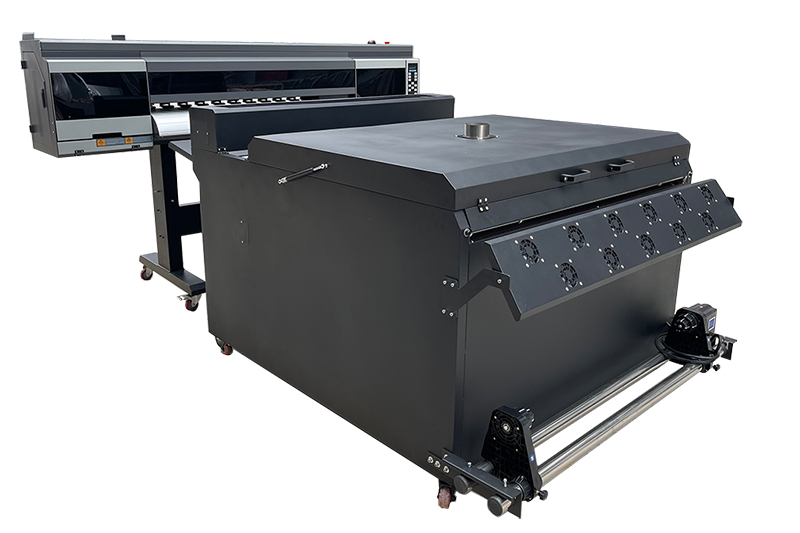The rise of DTF printing in automated manufacturing presents both opportunities and challenges. Here's a closer look at these aspects:

Opportunities:
1. Increased Efficiency: DTF printing enables faster and more efficient production processes compared to traditional methods. Automated ink deposition, high-speed printing, and digital workflow integration reduce manual labor, minimize production downtime, and enhance overall efficiency.
2. Customization and Personalization: DTF printing allows for easy customization and personalization of printed textiles. With automated workflows, manufacturers can quickly switch between different designs and print runs, catering to individual customer preferences and market demands.
3. Cost Savings: Automated DTF printing can lead to cost savings in manufacturing. With reduced labor requirements and optimized material usage, manufacturers can achieve higher production volumes while keeping costs under control. Additionally, DTF printing eliminates the need for intermediate steps like screen preparation, resulting in cost savings in terms of time and resources.
4. Scalability: DTF printing in automated manufacturing offers scalability. Manufacturers can easily scale up production volumes to meet growing demand without significant investments in additional equipment or infrastructure. Automation allows for seamless integration of multiple DTF printers and other production processes, enabling efficient scaling.
Challenges:
1. Initial Investment: Implementing DTF printing technology in automated manufacturing requires an initial investment in equipment, software, and training. Manufacturers need to assess the costs involved and ensure a return on investment in terms of increased productivity and profitability.
2. Equipment Maintenance: DTF printers require regular maintenance and upkeep to ensure optimal performance. This includes printhead cleaning, ink system maintenance, and other routine tasks. Manufacturers need to allocate resources for ongoing maintenance and ensure trained personnel are available to handle printer upkeep.
3. Workflow Integration and Training: Integrating DTF printing into automated manufacturing workflows requires careful planning and coordination. Manufacturers need to ensure seamless integration with existing systems, including design software, RIP software, and other production processes. Training employees on operating and maintaining DTF printers is also crucial for efficient implementation.
4. Quality Control: Maintaining consistent print quality is essential in automated DTF printing. Manufacturers need to establish quality control measures to monitor print output, color accuracy, and durability. This may involve regular testing, color management optimization, and adherence to industry standards.
5. Evolving Technology: DTF printing technology is continually evolving, with new advancements being introduced regularly. Manufacturers need to stay updated with the latest developments, understand new features and capabilities, and assess if upgrading or integrating new technology is necessary to remain competitive.
The opportunities presented by DTF printing in automated manufacturing are significant, allowing for increased efficiency, customization, and cost savings. However, manufacturers need to address the challenges associated with initial investments, maintenance, workflow integration, quality control, and staying abreast of evolving technology. By carefully navigating these challenges, manufacturers can harness the full potential of DTF printing in automated manufacturing and achieve success in the industry.
kenteer has launched DTF printers for customers . If you have any needs, you can contact us for a quote.
